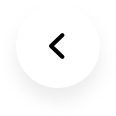Betaal / बे-ताल / Arrhythmic
A work weaving material and augmented realities
Variable size
2022
The relationship between what is real, and what is also simultaneously real but in a different, augmented, extra-or-infra-real sense, can be thought of as an off-beat rhythm, a time not exactly synchronous with “normal” time. Let’s just call it “Arrhythmic”.
In many Indic languages, there are spectral, arrhythmic beings who exist between the moments of our time; they are called “betaal”. The Betaal, a figure familiar from popular story cycles in India, is read in this work—in our today—as an entity that moves as an un-life, between time, personae, and consciousness.
The work instigates an encounter with simulations of these presences in an infrastructure-inflected landscape. A landscape of loops, knots, ties, ellipses, and holes—all made of steel wires and metal bars—creates a crisscross configuration suspended in space. It invites attention to gaps and apertures to the sky and ground as possible portals into “another” world. Could this be the gateway to a parallel time, to time running in a different direction, or to another kind of space-time coordinate?
Riddles demand answers and act as passwords to portals and catchments of the imagination. Like the thin strand caught between chopsticks, the comic, and the catastrophic are noodle-strands moving into the open mouth of a new-comer grappling entangled slippage. She wonders if fluid topology is a different route to the twists, folds, and tears of time. This too is a riddle, that has to be unravelled while walking through the installation.
Navigation through the work's enmeshed wires with a mobile phone will open the scenario with instances and strands of digital objects created via augmented reality. Floating figures will appear—drawn from topological anomalies, and from multiple histories and cultures of knots used by seafarers as anchors and connectors. Some of these objects can only appear as conceptual conceit in topological mathematics. These are spatial enigmas—drawn from knots, Mobius strips, a torus and spaghetti formation—that exist in multidimensional, conceptual geometry, but not in three-dimensional, actual, space. As protagonists in a dramaturgy of our new synthetic reality that moves between enmeshed and virtual, they dramatize the paradoxes of our time.
A topological enigma of a stylized silhouette of a bronze anthropomorph from approximately three thousand and five hundred years ago found in a copper hoard excavated in a Gangetic valley site in Northern India could suggest a weapon or a totem or a toy or a device whose use we cannot yet imagine. Arrhythmic, the work, reads across time and translates shapes into thoughts and intentions, making a device speak as a persona.
These distinct digital personae build a world of dispositions. These may be looking up, or tight-rope walking, or sitting, resting, arresting the beholder’s gaze away from an imminent catastrophe, rushing earthwards from the cosmos, refusing to look at the sky, intimating an extinction event, dancing on a spiral in time, considering the loop, and thinking out of breath. Gentle voices, with sentences that are also riddles, speak anecdotes of journeys and of living with aporias, of reporting the subterranean, the geological, the cosmic, the habitual, the miraculous, the luminous. They invoke a philosophical and poetic world somewhere between waking, dreaming, thinking, inventing, and playing.
The work calls into question the scales of our encounter with the world. The simulated or extrapolated scale of the figure in this landscape renders the perspectival field awry, bringing a degree of dis-orientation to the encounter, accentuating the experience of listening and perception. Within this “world within a world "are thoughts of distinct personae, of different genders, of different ages, of different moments of time.
The work becomes an occupation of times manifold, of time knots. This encounter between time and its arrhythmia—which can be a shadow of the present or an anticipation or imagination of the future, besides reverberating past—is a motif that appears in the thought, work, and writing of Raqs. This is a possible key to the door that opens on questions that have to do with what we do with time, what time it is, and what time opens up. It lets us think on the speed of thought, the velocity of feelings, the rhythms of labour, and speculations on futures. In this scenario, these Betaals become our interlocutors and emissaries, and express the things we feel and think between our heartbeats.
Betaals appear (from somewhere) and interrupt everything (everywhere).
Artist: Raqs Media Collective
Raqs Studio: Shamsher Ali, Moomal Shekhawat, Aarushi Surana
Coordinator: Xu Haoyu, Chen Nanxi
Dynamics and AR technical support: Fu Dongting
Designer and builder of located installation: Cai Yu, Xu Haoyu
Director of located installation: Jiang Jun, Liu Yihong
Betaal / बे-ताल / Arrhythmic
A work weaving material and augmented realities
Variable size
2022
The relationship between what is real, and what is also simultaneously real but in a different, augmented, extra-or-infra-real sense, can be thought of as an off-beat rhythm, a time not exactly synchronous with “normal” time. Let’s just call it “Arrhythmic”.
In many Indic languages, there are spectral, arrhythmic beings who exist between the moments of our time; they are called “betaal”. The Betaal, a figure familiar from popular story cycles in India, is read in this work—in our today—as an entity that moves as an un-life, between time, personae, and consciousness.
The work instigates an encounter with simulations of these presences in an infrastructure-inflected landscape. A landscape of loops, knots, ties, ellipses, and holes—all made of steel wires and metal bars—creates a crisscross configuration suspended in space. It invites attention to gaps and apertures to the sky and ground as possible portals into “another” world. Could this be the gateway to a parallel time, to time running in a different direction, or to another kind of space-time coordinate?
Riddles demand answers and act as passwords to portals and catchments of the imagination. Like the thin strand caught between chopsticks, the comic, and the catastrophic are noodle-strands moving into the open mouth of a new-comer grappling entangled slippage. She wonders if fluid topology is a different route to the twists, folds, and tears of time. This too is a riddle, that has to be unravelled while walking through the installation.
Navigation through the work's enmeshed wires with a mobile phone will open the scenario with instances and strands of digital objects created via augmented reality. Floating figures will appear—drawn from topological anomalies, and from multiple histories and cultures of knots used by seafarers as anchors and connectors. Some of these objects can only appear as conceptual conceit in topological mathematics. These are spatial enigmas—drawn from knots, Mobius strips, a torus and spaghetti formation—that exist in multidimensional, conceptual geometry, but not in three-dimensional, actual, space. As protagonists in a dramaturgy of our new synthetic reality that moves between enmeshed and virtual, they dramatize the paradoxes of our time.
A topological enigma of a stylized silhouette of a bronze anthropomorph from approximately three thousand and five hundred years ago found in a copper hoard excavated in a Gangetic valley site in Northern India could suggest a weapon or a totem or a toy or a device whose use we cannot yet imagine. Arrhythmic, the work, reads across time and translates shapes into thoughts and intentions, making a device speak as a persona.
These distinct digital personae build a world of dispositions. These may be looking up, or tight-rope walking, or sitting, resting, arresting the beholder’s gaze away from an imminent catastrophe, rushing earthwards from the cosmos, refusing to look at the sky, intimating an extinction event, dancing on a spiral in time, considering the loop, and thinking out of breath. Gentle voices, with sentences that are also riddles, speak anecdotes of journeys and of living with aporias, of reporting the subterranean, the geological, the cosmic, the habitual, the miraculous, the luminous. They invoke a philosophical and poetic world somewhere between waking, dreaming, thinking, inventing, and playing.
The work calls into question the scales of our encounter with the world. The simulated or extrapolated scale of the figure in this landscape renders the perspectival field awry, bringing a degree of dis-orientation to the encounter, accentuating the experience of listening and perception. Within this “world within a world "are thoughts of distinct personae, of different genders, of different ages, of different moments of time.
The work becomes an occupation of times manifold, of time knots. This encounter between time and its arrhythmia—which can be a shadow of the present or an anticipation or imagination of the future, besides reverberating past—is a motif that appears in the thought, work, and writing of Raqs. This is a possible key to the door that opens on questions that have to do with what we do with time, what time it is, and what time opens up. It lets us think on the speed of thought, the velocity of feelings, the rhythms of labour, and speculations on futures. In this scenario, these Betaals become our interlocutors and emissaries, and express the things we feel and think between our heartbeats.
Betaals appear (from somewhere) and interrupt everything (everywhere).
Artist: Raqs Media Collective
Raqs Studio: Shamsher Ali, Moomal Shekhawat, Aarushi Surana
Coordinator: Xu Haoyu, Chen Nanxi
Dynamics and AR technical support: Fu Dongting
Designer and builder of located installation: Cai Yu, Xu Haoyu
Director of located installation: Jiang Jun, Liu Yihong
Betaal / बे-ताल / Arrhythmic
A work weaving material and augmented realities
Variable size
2022
The relationship between what is real, and what is also simultaneously real but in a different, augmented, extra-or-infra-real sense, can be thought of as an off-beat rhythm, a time not exactly synchronous with “normal” time. Let’s just call it “Arrhythmic”.
In many Indic languages, there are spectral, arrhythmic beings who exist between the moments of our time; they are called “betaal”. The Betaal, a figure familiar from popular story cycles in India, is read in this work—in our today—as an entity that moves as an un-life, between time, personae, and consciousness.
The work instigates an encounter with simulations of these presences in an infrastructure-inflected landscape. A landscape of loops, knots, ties, ellipses, and holes—all made of steel wires and metal bars—creates a crisscross configuration suspended in space. It invites attention to gaps and apertures to the sky and ground as possible portals into “another” world. Could this be the gateway to a parallel time, to time running in a different direction, or to another kind of space-time coordinate?
Riddles demand answers and act as passwords to portals and catchments of the imagination. Like the thin strand caught between chopsticks, the comic, and the catastrophic are noodle-strands moving into the open mouth of a new-comer grappling entangled slippage. She wonders if fluid topology is a different route to the twists, folds, and tears of time. This too is a riddle, that has to be unravelled while walking through the installation.
Navigation through the work's enmeshed wires with a mobile phone will open the scenario with instances and strands of digital objects created via augmented reality. Floating figures will appear—drawn from topological anomalies, and from multiple histories and cultures of knots used by seafarers as anchors and connectors. Some of these objects can only appear as conceptual conceit in topological mathematics. These are spatial enigmas—drawn from knots, Mobius strips, a torus and spaghetti formation—that exist in multidimensional, conceptual geometry, but not in three-dimensional, actual, space. As protagonists in a dramaturgy of our new synthetic reality that moves between enmeshed and virtual, they dramatize the paradoxes of our time.
A topological enigma of a stylized silhouette of a bronze anthropomorph from approximately three thousand and five hundred years ago found in a copper hoard excavated in a Gangetic valley site in Northern India could suggest a weapon or a totem or a toy or a device whose use we cannot yet imagine. Arrhythmic, the work, reads across time and translates shapes into thoughts and intentions, making a device speak as a persona.
These distinct digital personae build a world of dispositions. These may be looking up, or tight-rope walking, or sitting, resting, arresting the beholder’s gaze away from an imminent catastrophe, rushing earthwards from the cosmos, refusing to look at the sky, intimating an extinction event, dancing on a spiral in time, considering the loop, and thinking out of breath. Gentle voices, with sentences that are also riddles, speak anecdotes of journeys and of living with aporias, of reporting the subterranean, the geological, the cosmic, the habitual, the miraculous, the luminous. They invoke a philosophical and poetic world somewhere between waking, dreaming, thinking, inventing, and playing.
The work calls into question the scales of our encounter with the world. The simulated or extrapolated scale of the figure in this landscape renders the perspectival field awry, bringing a degree of dis-orientation to the encounter, accentuating the experience of listening and perception. Within this “world within a world "are thoughts of distinct personae, of different genders, of different ages, of different moments of time.
The work becomes an occupation of times manifold, of time knots. This encounter between time and its arrhythmia—which can be a shadow of the present or an anticipation or imagination of the future, besides reverberating past—is a motif that appears in the thought, work, and writing of Raqs. This is a possible key to the door that opens on questions that have to do with what we do with time, what time it is, and what time opens up. It lets us think on the speed of thought, the velocity of feelings, the rhythms of labour, and speculations on futures. In this scenario, these Betaals become our interlocutors and emissaries, and express the things we feel and think between our heartbeats.
Betaals appear (from somewhere) and interrupt everything (everywhere).
Artist: Raqs Media Collective
Raqs Studio: Shamsher Ali, Moomal Shekhawat, Aarushi Surana
Coordinator: Xu Haoyu, Chen Nanxi
Dynamics and AR technical support: Fu Dongting
Designer and builder of located installation: Cai Yu, Xu Haoyu
Director of located installation: Jiang Jun, Liu Yihong









